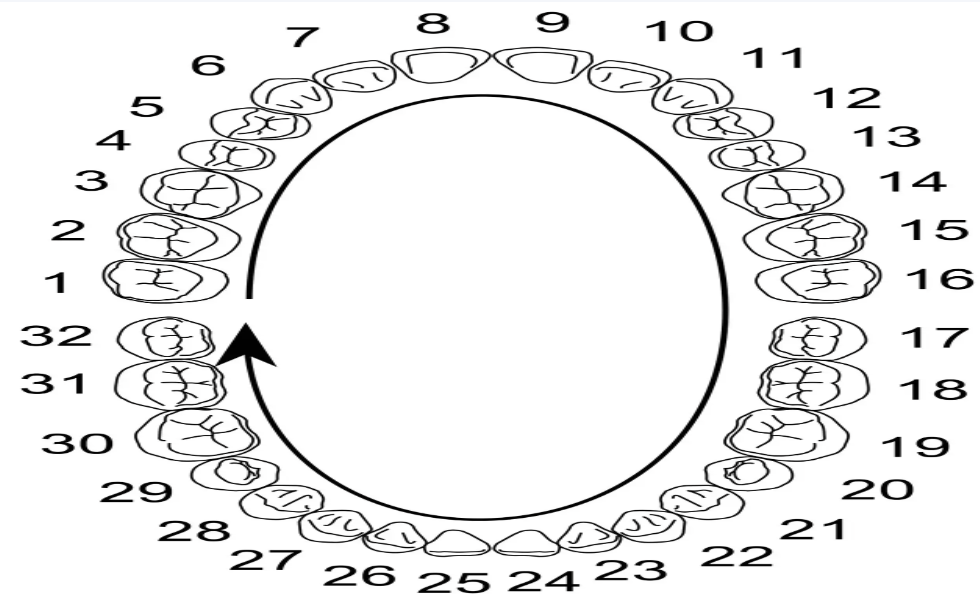Teeth Numbering Systems
Us humans have a tendency to over-complicate things, and the teeth numbering system is not exception to that tendency. As mentioned in our except there are more than 50 tooth numbering systems in the world, but with 3 being the main ones, here they are:
Universal Numbering System
Tooth number 1 is the tooth the farthest back on the right side of the mouth in the upper (maxillary) jaw. Numbering continues along the upper teeth toward the front and across to the tooth the farthest back on the top left side number 16. The numbers continue by dropping to the lower (mandibular) jaw. Number 17 is the tooth the farthest back on the left side of the mouth on the bottom. Numbering continues again toward the front and across to the farthest tooth back on the bottom right side of the mouth number 32. In this system, the teeth that should be there are numbered. If you are missing your third molars, your first number will be 2 instead of 1, acknowledging the missing tooth. If you’ve had teeth removed or teeth missing, the missing teeth will be numbered as well.
Palmer Notation Numbering System
Is used by some orthodontists, periodontists, and oral surgeons. Originally called the Zsigmondy system after an Austrian dentist of that name who developed the idea in 1861. The mouth is divided into four sections called quadrants. The numbers 1 through 8 and a unique symbol is used to identify the teeth in each quadrant. The numbering runs from the centre of the mouth to the back. In the upper right quadrant tooth, number 1 is the incisor. The numbers continue to the right and back to tooth number 8, which is the third molar. The numbers sit inside an L-shaped symbol used to identify the quadrant. The L is right side up for the teeth in the upper left quadrant. The teeth in the upper right use a backwards L. For the bottom quadrants, the L is upside down following the same pattern from the uppers. Letters such as UR or URQ for the upper right or upper right quadrant may also identify the quadrants. The Palmer notation is widely used in the UK.
Federation Dentaire Internationale Numbering System (FDI)
Internationally the two-digit system is used worldwide. Every branch of dentistry uses this system. Each quadrant is assigned a number. The maxillary right quadrant is assigned the number 1, the maxillary left quadrant is assigned the number 2, the mandibular left quadrant is assigned the number 3, and the mandibular right quadrant is assigned the number 4. The teeth within each quadrant are assigned a number from 1 through 8 with 1 being the central incisor and 8 being the third molar. The FDI system is widely used in Albania.
Why are numbering systems important?
It's important when referring to our teeth especially when having a remote or asynchronous conversation we are pointing to the right tooth. Therefore, we highly recommend our customers when contacting us over the phone they also state which numbering system they are using as reference.


